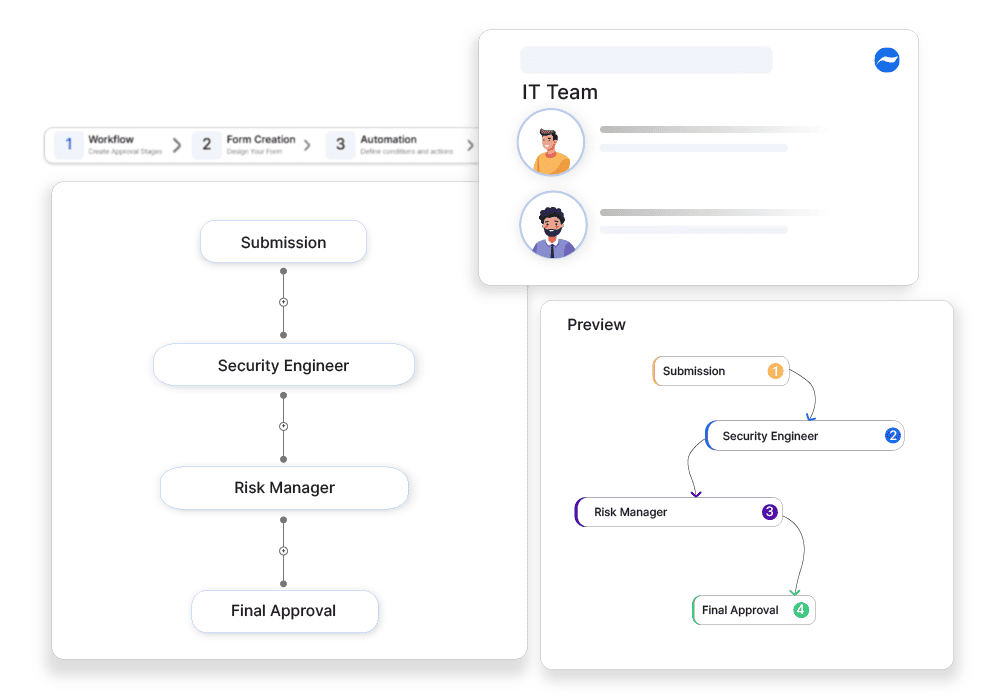Threat Modeling and Risk Mitigation Workflow
Automate threat modeling approvals to proactively assess security risks and implement mitigation strategies.

Why automate?
Threat modeling helps organizations identify security risks, analyze attack vectors, and implement proactive defenses. Without structured approvals, risk mitigation strategies may be inconsistent, unvalidated, or improperly prioritized. Manual risk assessment processes slow down security decision-making, leading to delayed threat responses and increased vulnerabilities. A structured approval workflow ensures that all security risks are reviewed, prioritized, and mitigated based on business impact. Cflow helps to automate Threat Modeling and Risk Mitigation Approvals, ensuring that security assessments are validated, documented, and aligned with best practices, reducing attack surface exposure.
How Cflow Helps:
Approval-Based Security Risk Reviews
Cflow ensures that all risk assessments follow structured approvals, preventing oversight.
Compliance with Cybersecurity Standards
Approved threat models align with MITRE ATT&CK, NIST, and industry best practices, ensuring security readiness.
Prioritized Mitigation Plans
Critical threats receive priority approvals, ensuring proactive risk mitigation.
Full Audit Trail for Threat Analysis
Cflow logs all approved risk mitigation strategies, providing visibility into security decisions.
Frequently Asked Questions
What is threat modeling and risk mitigation?
A process to identify potential security risks and implement strategies to address them early in development.
What are the main challenges?
Incomplete models, lack of stakeholder buy-in, and insufficient follow-through.
How can it be streamlined?
By using tools like STRIDE or DREAD and incorporating them into design reviews.



